

Elephants
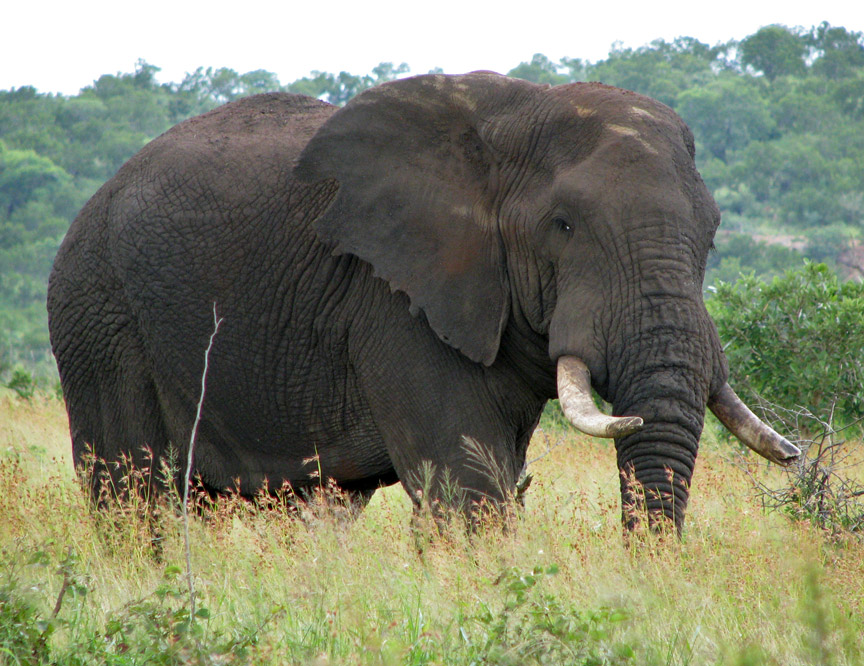
The African Bush Elephant (Loxodonta africana) is the larger of the two species of African elephants. Both it and the African Forest Elephant have usually been classified as a single species, known simply as the African Elephant. Some authorities still consider the presently available evidence insufficient for splitting the African Elephant into two species. It is also known as the Bush Elephant or Savanna Elephant.
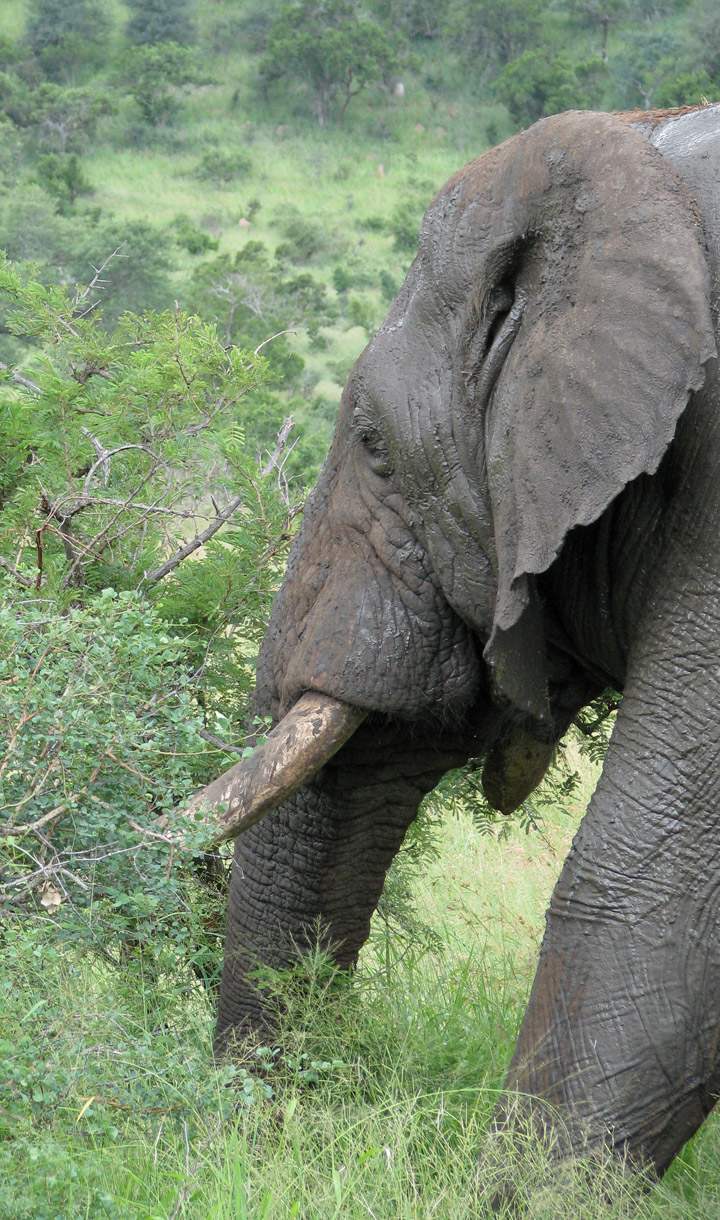
The African Bush Elephant is the largest living land dwelling animal, normally
reaching 6 to 7.3 meters (19.7 to 24.0 feet) in length and 3 to 3.5 meters (9.8
to 11.5 feet) in height at the shoulder, and weighing between 7,000 and 10,000
kg (15,000-22,000 lb).

coming out of the bush
The largest on record, shot in Angola in 1955, was a bull weighing 12,274 kg
(27,000 lb) and standing 4.2 meters (13.8 feet) high, the body of which is now
mounted in the rotunda of the National Museum of Natural History in Washington,
D.C. The Bush Elephant normally moves at a rate of 6 km/h (4 mph), but it can
reach a top speed of 40 km/h (25 mph) when scared or upset.
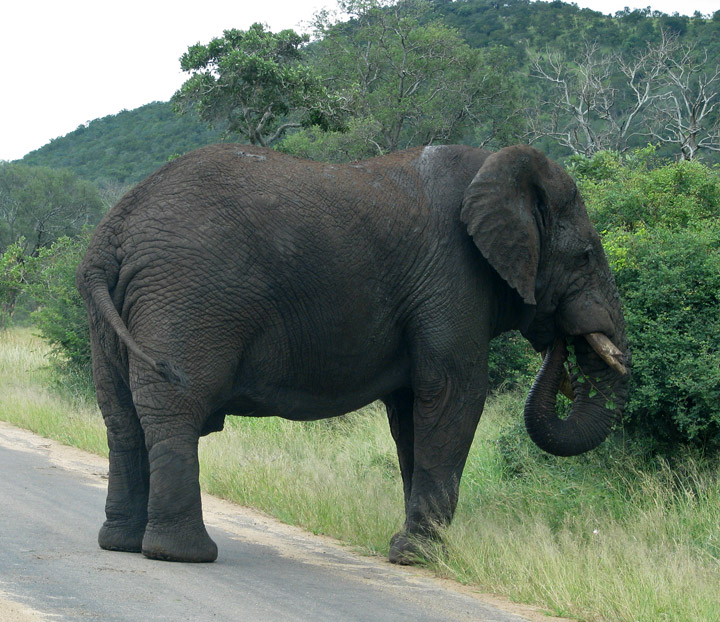
The animal is characterized by its large head; two large ears that cover its
shoulders and radiate excess heat; a large and muscular trunk; two prominent
tusks, which are well-developed in both sexes, although more commonly in males;
a short neck; a large, barrel-like body; four long and heavy legs; and a
relatively short tail.
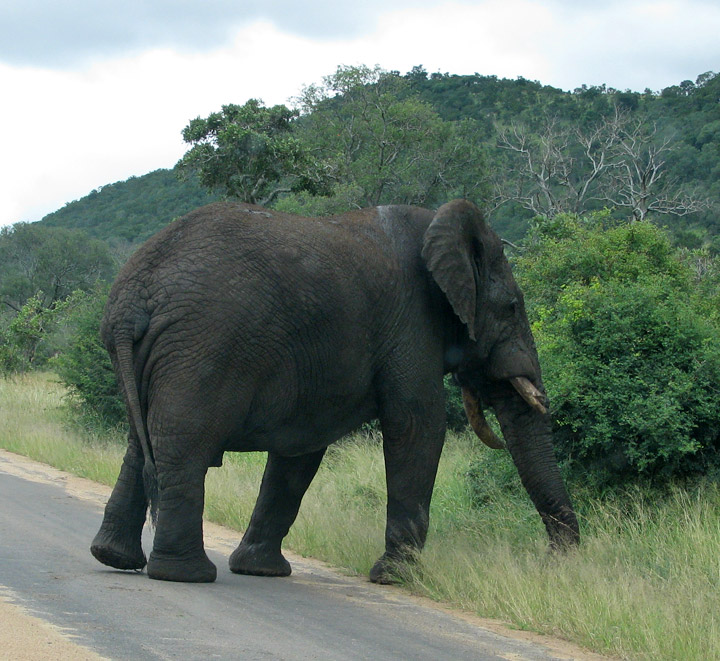
crossing the road
The animal is protected by a heavy but flexible layer of gray-brown skin, dotted with mostly undeveloped patches of hair and long, black hair at the tip of its tail. Its back feet have three toes that form a hoof, while the number of toes on the front feet have varied between four and five. The front is smoother and less convex than that of the Asian Elephant.

The trunk is the most characteristic feature of the African Bush Elephant. It is
formed by the fusion and elongation of the nose and upper lip, forming a
flexible and strong organ made purely of muscle.
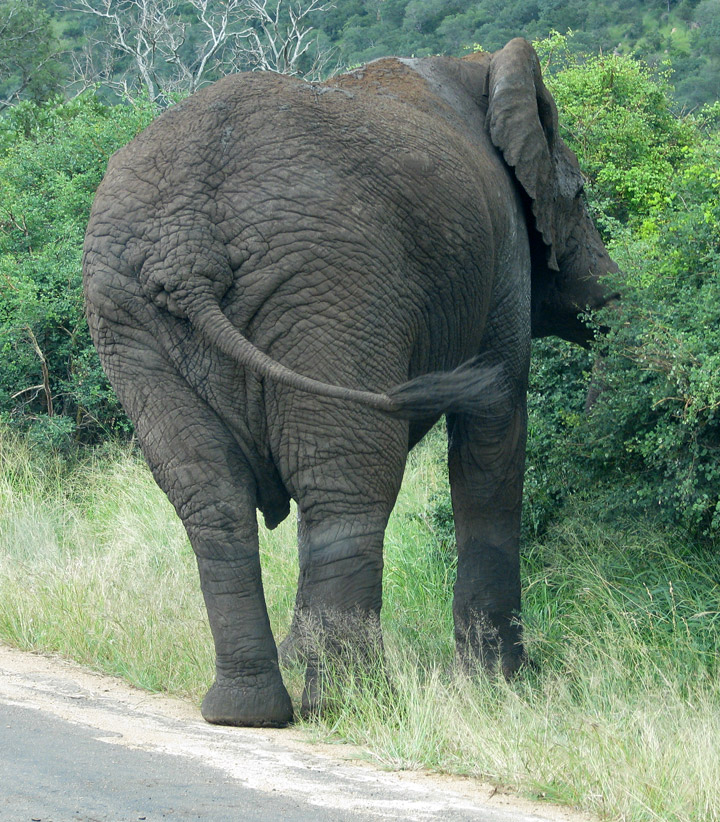
and back into the bush
Little scientific research has been carried out into elephants' cognitive or perceptual abilities. An exception is a recent report that African elephants are able to use seismic vibrations at infrasound frequencies for communication.
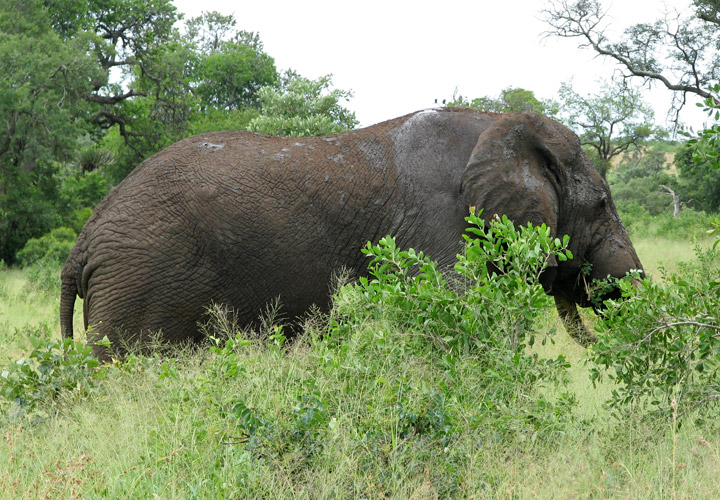
African elephants are herbivorous. Their diet varies according to their habitat;
elephants living in forests, partial deserts, and grasslands all eat different
proportions of herbs and tree or shrubbery leaves. Elephants inhabiting the
shores of Lake Kariba have been recorded eating underwater plant life. In order to break down the plants they consume, the African Bush
Elephant has four large molars, two in each mandible of the jaw. Each of these
molars is 10 cm wide and 30 cm long. Over time, these molars are worn away and
new ones are grown to replace them as the elephant ages. Around the age of 15
their milk teeth are replaced by new ones that last until the age of 30, and
then by another set which wear off past the age of 40, being replaced by the
last set of teeth that last approximately until the age of 65–70. Not much
later, the animal dies of starvation from not being able to feed correctly.
There are known cases of over 80 year old specimens in captivity.

These animals typically ingest an average of 225 kg of vegetal matter daily,
which is defecated without being fully digested. That, combined with the long
distances that they can cover daily in search of more food, contributes notably
to the dispersion of many plant seeds that germinate in the middle of a
nutrient-filled feces mound. Elephants rip apart all kind of plants, and knock
down trees with the tusks if they are not able to reach the tree leaves. In some
national parks there is overpopulation, so that managers of overpopulated parks
often contact other parks with fewer specimens to transfer excess individuals.
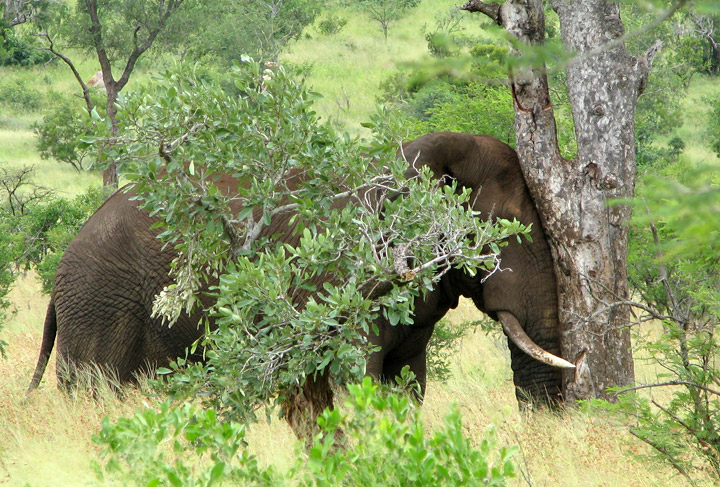
brushing against the tree
The African Bush Elephant is an intelligent animal. Experiments with reasoning and learning show that they are the smartest ungulates together with their Asian cousins. This is mostly due to their large brain.

Herds are made up of related females and their young, directed by the eldest
female, called the matriarch. Infrequently, an adult male goes with them, but
those usually leave the pack when reaching adolescence to form herds with other
elephants of the same age. Later, they spread out, carrying out a lonely life,
approaching the female herds only during the mating season. Nevertheless,
elephants do not get too far from their families and recognize them when
re-encountered. Sometimes, several female herds can blend for a period of time,
reaching even hundreds of individuals.
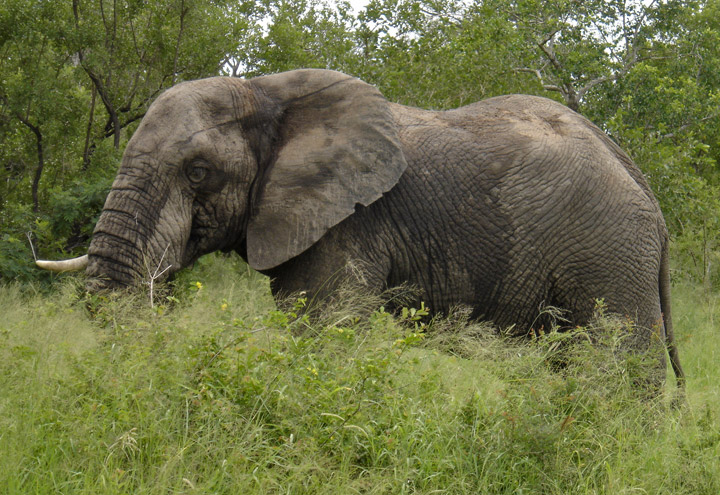
The matriarch is the one who decides the route and shows to each other member of
the herd all the water sources she knows, which the rest will memorize in the
future. The relations among the members of the herd is very tight; when a female
gives birth to a baby the rest go to acknowledge it touching her with the trunk;
and when an old elephant dies the rest of the herd will stay by the corpse for a
while. The famous elephant graveyards are a myth, but it is true that these
animals can recognize a carcass of its species when they find one during their
trips, and even if it is a stranger, they form around it and sometimes they even
touch its forehead with their trunk.
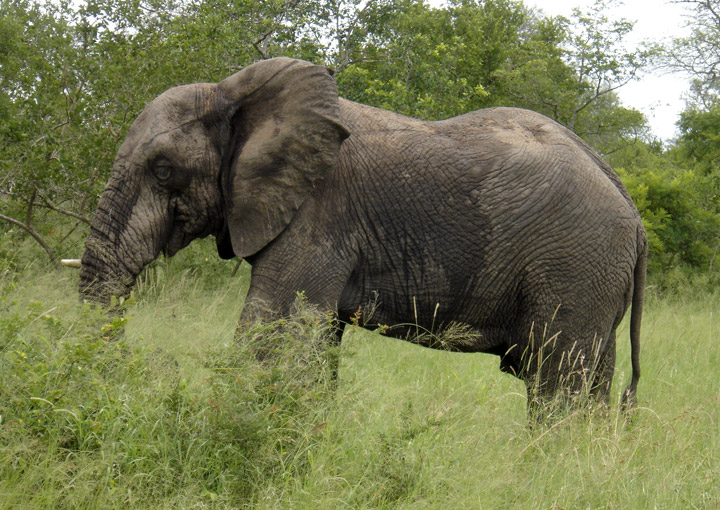
Mating happens when the female feels ready, an event that can occur anytime
during the year. When she is ready, she starts emitting infrasound that attract
the males, sometimes from kilometers away. The adult males start arriving at the
herd during the following days and begin fighting, causing some injuries and
even broken tusks. The female shows her acceptance of the victor by rubbing her
body against his. They mate, and then both go their own way. After 22 months of
gestation (the longest among mammals), the female gives birth to a single 90 cm
high calf which weighs more than 100 kg. The baby feeds on the mothers milk
until the age of 5, but also eats solid food from as early as 6 months old. Just
a few days after birth the calf can follow the herd by foot.
Text from Wikipedia
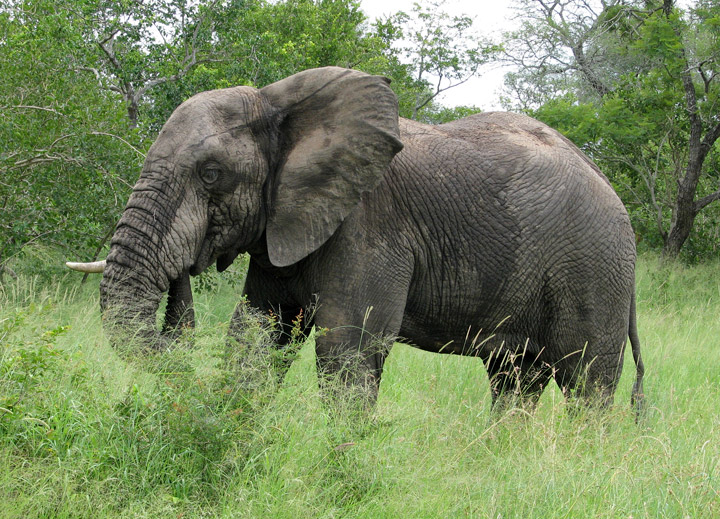
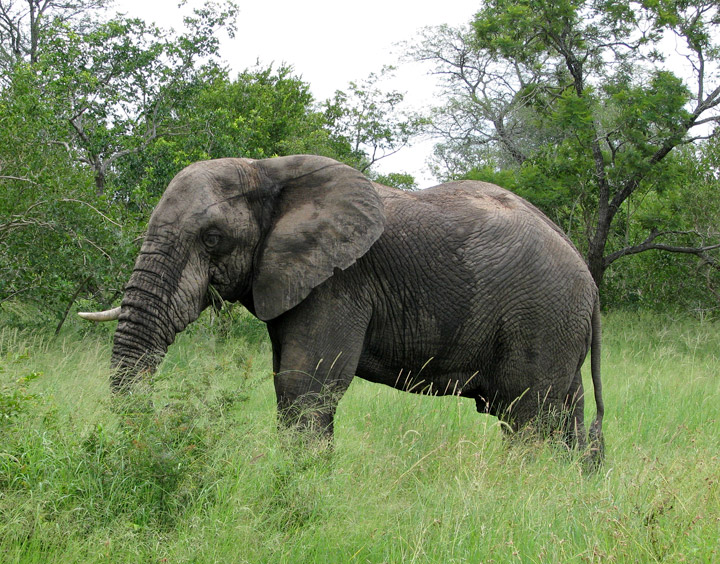
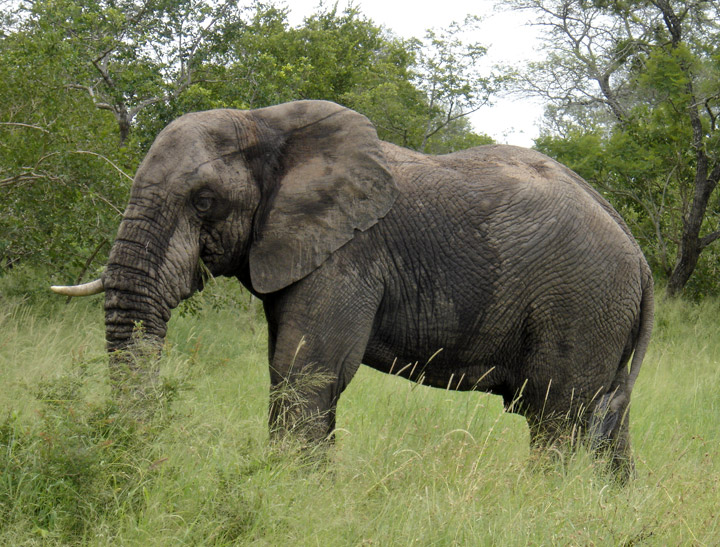
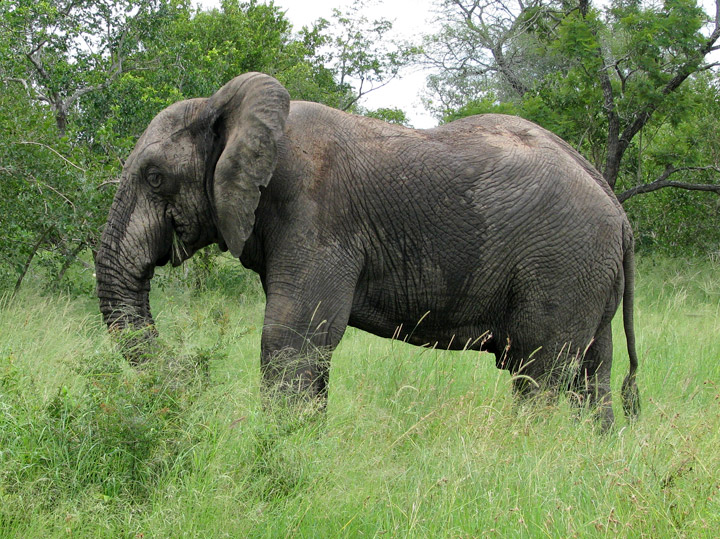

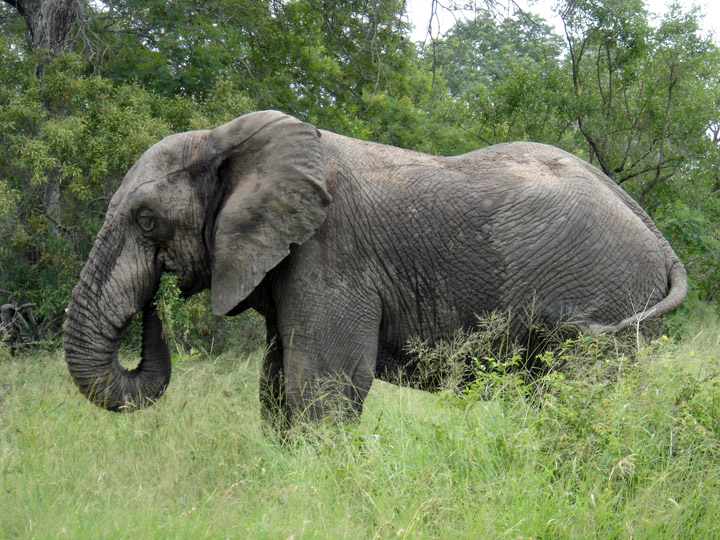
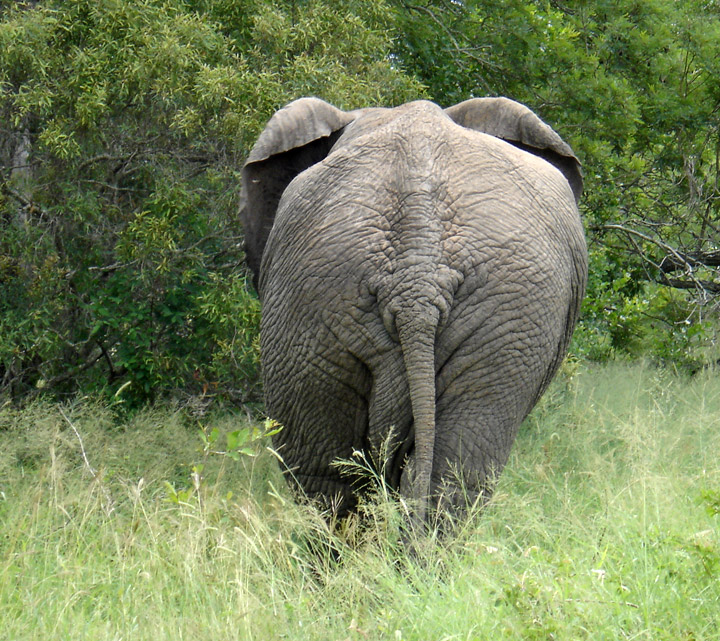
Goodbye